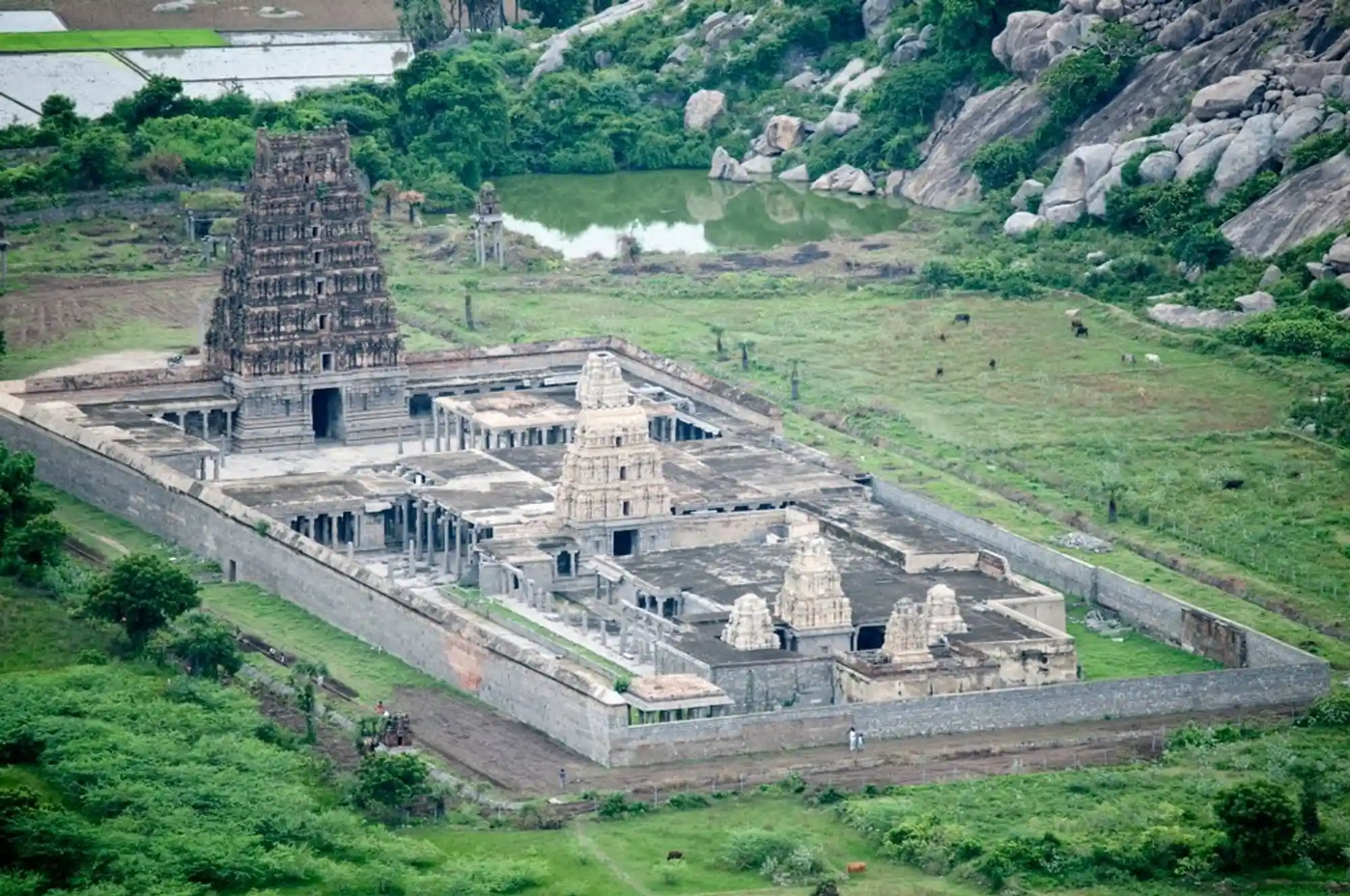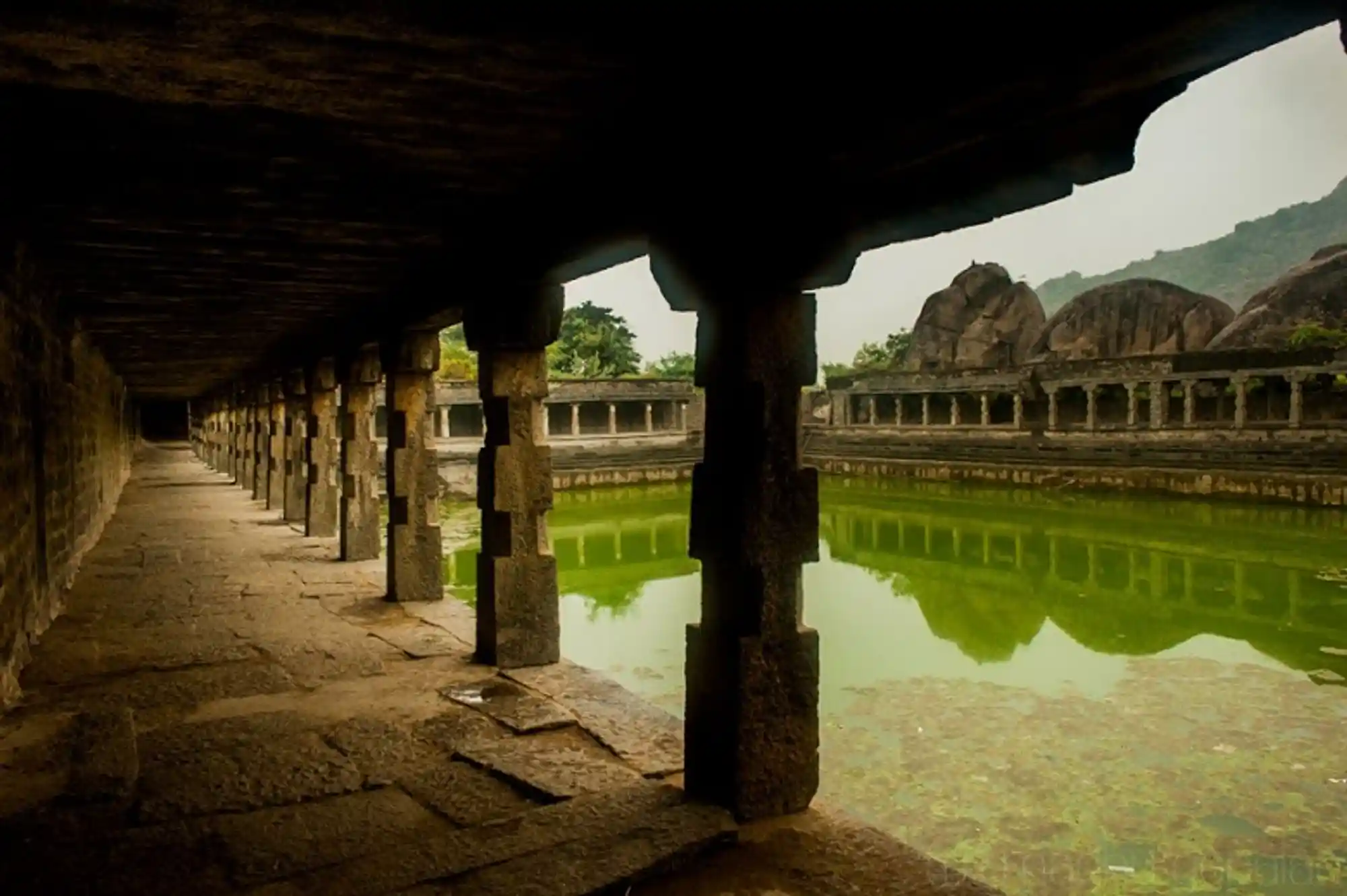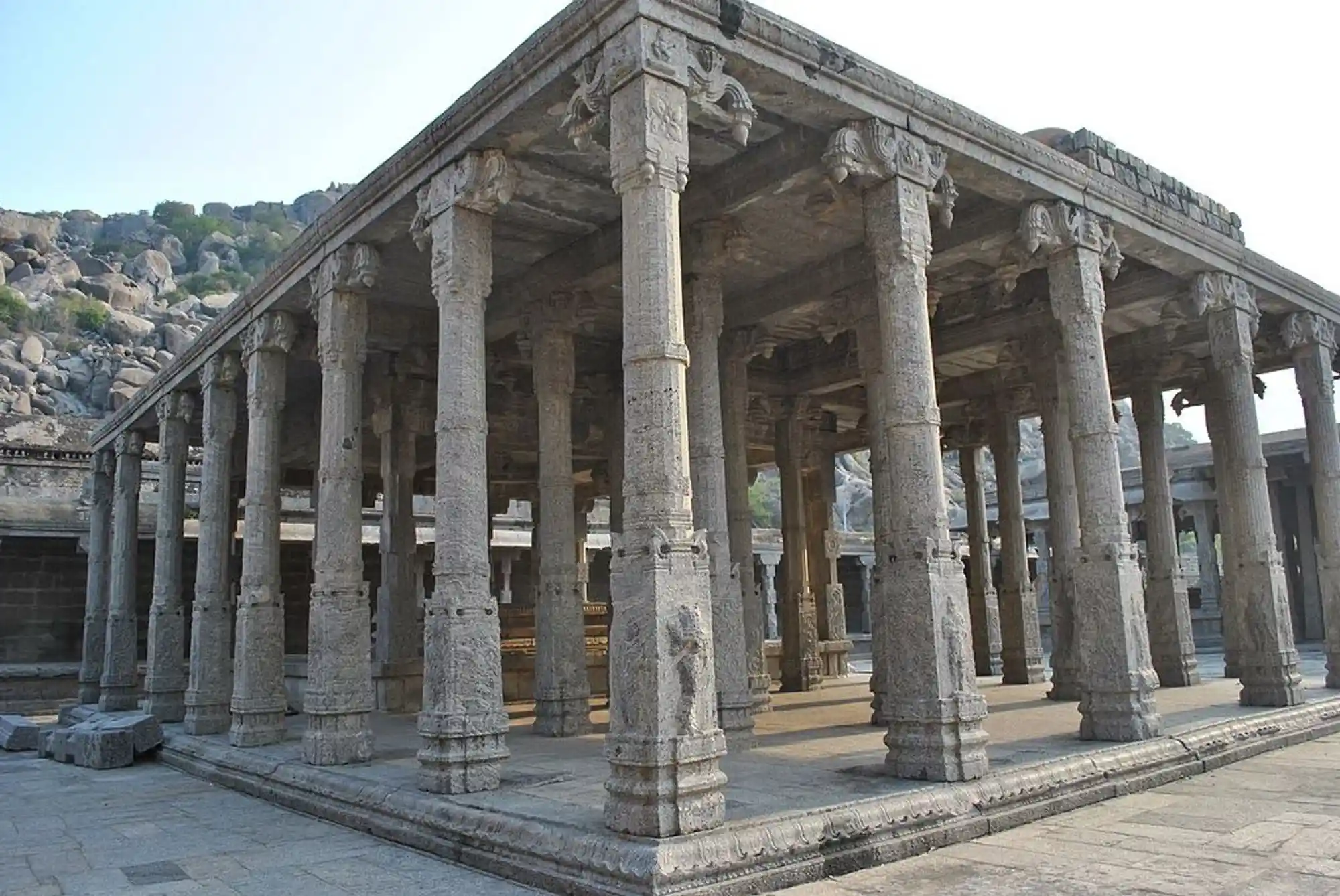Gingee's Oldest and Grandest
The Venkataraman Temple, dedicated to Venkateswara, an incarnation of Vishnu, resides in the town of Gingee and stands as the town's grandest sanctuary. Constructed by the Nayakas in the 16th century, this temple, nearly 450 years old, stands today as a testament to its former magnificence, with its splendour and glory enduring through time.

Aerial view of the temple I Source: Blogspot
The Gingee Venkataraman Temple stands as one of the most awe-inspiring and significant temples in the Indian state of Tamil Nadu. With a rich history and enduring architecture, it continues to captivate visitors and devotees to this day. Perched upon a small hill in the town of Gingee, which once held great importance as a stronghold of the Vijayanagara Empire, the Venkataramana Temple remains a remarkable relic within the Gingee Fort complex. Situated on the southeast side of the outer fort, this temple holds a special place in the region's heritage.
Dubbed the "Troy of the East," the sprawling Gingee Fort in the Villupuram region was famed for its impregnability. Nestled atop three hillocks - Rajagiri, Krishnagiri, and Chandragiri - it witnessed the ebb and flow of several dynasties across centuries.
Built during the 16th century under the reign of the Gingee Nayak kings who ruled the region, the Venkataraman Temple was ensconced within the precincts of this formidable fort. Adorned with magnificent sculptures and intricately carved pillars, the temple stands as a testament to the artistic prowess of the Gingee Nayakas. It holds a preeminent place within the Gingee fortress, primarily constructed by Muthialu Nayaka (1540-1550 CE), with perhaps a minor Chola core. Often referred to as the 'Temple of a Thousand Pillars,' the grand shrine bore witness to changes over time, with some of its pillars relocated to enhance other sites after the decline of the Gingee Nayaks.
Following the conquest of Gingee by the French in 1761 CE, several striking monolithic ornamental pillars from the temple found their way to Pondicherry, adorning the base of the Governor Dupleix monument. Additionally, in 1860 CE, a Jain official named Sri Baliah, serving in the Madras Provincial Services, played a role in dismantling large stone elephants from the Gingee Venkataramana temple, repurposing them for structures in the Sittamur Jain temple. The Pillars around the Gandhi Statue in Pondicherry stand as yet another example of their reuse, highlighting the temple's enduring influence.
However, the temple's splendour has faded over time. Due to a combination of insufficient funding and neglect, certain sections of the temple have fallen into disrepair. The intricate sculptures, delicate stone carvings, resplendent pillars, and the awe-inspiring gopuram tower stand as a testament to the remarkable craftsmanship and artistic acumen of the Gingee Nayak dynasty's artisans.
The Gingee Venkataraman Temple remains a place of profound significance for devotees of Lord Venkateshwara. Its stunning architecture and rich history render it a true cultural treasure. Amidst the serene and abandoned surroundings, it echoes the resplendence of bygone eras. Visiting this site, one cannot help but be awed by the sheer magnitude and magnificence of a structure that has gracefully endured the test of time for over five centuries.
The Chettikulam tank, believed to have been built in the 17th century by Rama Chetti or in the 18th century under the Maratha Kingdom by Rama Shetty, stands to the west of the Elephant tank. The Chakrakulam and a mandapa adjacent to the Venkataramana temple were constructed by Muthyala Nayaka.
Built in the traditional Vijayanagara style, the Venkataraman temple boasts numerous inscriptions in Tamil that allude to other structures erected by Nayakas across Tamil country. Notably, the architecturally significant Kalyanamahal, located to the temple's east, is attributed to Krishnappa Nayaka, possibly Tubaki Krishnappa Nayaka, as per the MacKenzie manuscripts. Characterised by its elegant Vijayanagara-style architecture, the Kalyanamahal comprises a square courtyard encircled by chambers with verandahs supported by arches and staircases. At its centre rises an eight-storey square tower crowned with a pyramidal roof.
Upon entering the temple, one is greeted by the sanctum sanctorum housing the idol of Lord Venkateshwara. Encircling the temple, smaller shrines dedicated to various deities enrich the spiritual experience. Goddess shrines grace the western corners, each adorned with a petite mandapa and a pier embellished with colonettes. Further from the western wall's centre, a shrine featuring sculptures of Narasimha and Krishna commands attention.
Adjacent to the temple is the Anaikulam tank, often known as the Elephant Tank due to its historical use in washing elephants. Situated west of the Elephant tank are two more prominent tanks - Chakrakulam and Chettikulam. These reservoirs are fed by perennial springs that maintain their water levels even during the driest summer months, showcasing Senji's remarkable waterworks, a testament to the dams and canals constructed by Krishnappa Nayaka and successors.
Designed in the Dravidian style, the temple boasts towering gopurams, exquisitely carved pillars, and ornate sculptures. Positioned near the "Gateway of Pondicherry" to the south, it proudly faces east, its prominent gopuram welcoming all. Elaborate gopurams, mandapas, and sculptured panels portraying Hindu deities and epic scenes grace every corner. The entrance's majestic towering gopuram is a sight to behold. The temple also features shrines dedicated to Devi, Aandaal, and Narasimha. Among its offerings, two prakarams are encircling the sanctum: the Kalyana Mandapa, Urchava Mandapa, and Yaga Sala Mandapa, each adorned with stone (granite) pillars, although now in ruins. Presently under the care of the Archaeological Society of India (ASI), the temple appears to be devoid of active worship.
A substantial and thoughtfully designed structure, the temple was primarily erected in a single phase. Its most exquisite sculptures are found on the panels flanking the entrance gateway, depicting episodes from the Ramayana, Vishnu's incarnations, and the puranic tale of Samudra Manthan.

The Elephant Tank I Source: thenewsminute.com

The temple of thousand pillars I Source: Wikimedia Commons

The pillars and colonettes at the temple I Source: stock.abode.com

The spectacular main Gopuram I Source: Wikimedia Commons


